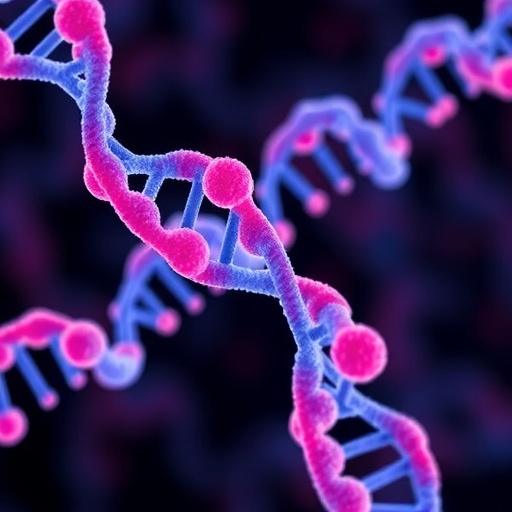A revolutionary breakthrough in gene therapy now offers renewed hope for patients battling spinal muscular atrophy (SMA) types II and III, as a single-dose treatment demonstrates promising results in a recent open-label, single-arm clinical investigation. Published in the World Journal of Pediatrics in 2025, the study spearheaded by Ma, Jiang, Li, and colleagues unveils the potential of GC101, a novel gene therapy designed to address the underlying genetic deficiencies that characterize these debilitating neuromuscular disorders.
Spinal muscular atrophy is a genetic disease marked by progressive muscle wasting and weakness due to motor neuron degeneration in the spinal cord. Types II and III of SMA, while less severe than type I, considerably impair motor functions and significantly diminish quality of life, leaving patients dependent on mobility aids and at risk of respiratory complications over time. Traditional treatments have focused on symptomatic management or multi-dose regimens. However, the GC101 therapy represents a paradigm shift by aiming to correct genetic errors through a one-time intervention, potentially transforming long-term disease prognosis.
At its core, GC101 employs an adeno-associated viral (AAV) vector system to deliver a functional copy of the SMN1 gene, which is deficient in SMA patients. This gene replacement strategy is meticulously engineered to ensure targeted delivery to motor neurons while minimizing off-target effects and immunogenicity. The study reports that after a single intravenous infusion of GC101, patients with SMA types II and III exhibited marked improvements in motor function scores during the follow-up period. These findings underscore not only the safety but also the robust efficacy of this gene therapy approach.
.adsslot_ACYXnHRMV5{ width:728px !important; height:90px !important; }
@media (max-width:1199px) { .adsslot_ACYXnHRMV5{ width:468px !important; height:60px !important; } }
@media (max-width:767px) { .adsslot_ACYXnHRMV5{ width:320px !important; height:50px !important; } }
ADVERTISEMENT
The meticulous clinical evaluation incorporated advanced neurological assessments, electromyography, and pulmonary function tests to monitor therapeutic outcomes. Remarkably, the sustained expression of the SMN protein post-treatment correlated with enhanced motor neuron survival and muscle strength. Researchers also observed a notable reduction in the progression rate of muscle degeneration compared to historical controls, suggesting the treatment’s ability to alter disease trajectory fundamentally. The data thus hint at GC101’s capacity to improve life expectancy and reduce the burden of supportive care interventions.
In addition to functional recovery, the investigation also monitored biochemical markers indicative of neuronal health and systemic inflammation. A suppression in pro-inflammatory cytokine profiles and normalization of neurotrophin levels was documented in most participants, implying that GC101 may modulate the neuroimmune environment favorably. This multi-dimensional effect could be pivotal in forestalling the secondary complications common in SMA, ranging from respiratory insufficiency to scoliosis. These biological insights deepen our understanding of the gene therapy’s mechanism beyond mere genetic correction.
The open-label design of the study, while lacking a placebo control, was rigorously justified by ethical considerations since no effective curative treatments existed for these SMA subtypes at the study’s inception. Patient selection criteria were stringent, focusing on genetically confirmed diagnoses and stable baseline motor function to ensure result validity. Furthermore, the clinical team maintained continuous vigilance for potential adverse events such as vector-related immune responses, hepatic dysfunction, or vector shedding. Encouragingly, no serious adverse reactions linked to the therapy were reported, supporting its favorable safety profile.
The single-arm nature of the trial presents an exciting model for rapid assessment of transformative therapies in rare diseases, balancing urgency with scientific rigor. It also reflects a growing trend in gene therapy trials that prioritize patient access to potentially life-changing treatments while gathering robust longitudinal efficacy and safety data. In this instance, GC101’s capability to induce durable gene expression and clinical improvements after a solitary administration propels it toward consideration as a frontline therapeutic option for SMA II and III.
Looking ahead, the authors emphasize the necessity of extended follow-up to evaluate long-term sustainability of benefits and monitor for delayed adverse effects. Plans for expanded phase III trials involving larger cohorts and comparative control groups are underway. Such studies will help refine dosing parameters, optimize patient selection, and may pave the way for regulatory approval of GC101. International collaborations could also help elucidate its effectiveness across diverse genetic backgrounds and healthcare settings.
The broader implications of this research ripple across the field of genetic medicine. GC101’s success exemplifies the revolutionary potential of AAV-mediated, single-dose gene therapies to tackle chronic neuromuscular conditions previously deemed incurable. The precision engineering, vector stability, and targeted delivery mechanisms honed in this study lay groundwork for analogous approaches addressing a spectrum of monogenic disorders. In this sense, SMA II and III serve as a proving ground for transformative strategies that could redefine treatment paradigms globally.
Technological innovations underpinning GC101’s development also deserve recognition. The vector manufacturing processes implemented ensure high purity and potency, factors crucial for consistent therapeutic outcomes. Sophisticated genomic and proteomic assays allowed real-time tracking of treatment effects at molecular levels, refining dosing strategies and enabling personalized medicine applications. These advances collectively represent the cutting edge of translational genetics, transforming laboratory insights into tangible clinical benefits.
In summary, the GC101 gene therapy trial marks a seminal moment in the fight against spinal muscular atrophy types II and III. It bridges the gap between molecular genetics and patient care, demonstrating that a precise, single-dose intervention can yield sustained motor and biological improvements with minimal safety concerns. While challenges remain, including long-term surveillance and broader accessibility, this study heralds a new chapter for SMA therapeutics. As the genetic era of medicine continues to unfold, breakthroughs like GC101 illuminate the path to conquering rare hereditary diseases once deemed insurmountable.
The revelation of GC101’s potential acts as a beacon for both clinicians and researchers, invigorating efforts to develop tailored gene therapies. The integration of clinical expertise, innovative vector engineering, and rigorous patient monitoring embodied in this study exemplifies the dynamic synergy driving the field forward. As researchers decode the complexities of gene expression and neurobiology, treatments will undoubtedly evolve in precision and efficacy, further improving patient outcomes. The GC101 trial thus stands not only as a landmark achievement for SMA but also as an inspiring testament to the transformative power of genetic medicine.
Subject of Research: Gene therapy for spinal muscular atrophy types II and III
Article Title: Single-dose GC101 gene therapy for spinal muscular atrophy types II and III: an open-label single-arm study
Article References:
Ma, XW., Jiang, XY., Li, ZQ. et al. Single-dose GC101 gene therapy for spinal muscular atrophy types II and III: an open-label single-arm study. World J Pediatr (2025). https://doi.org/10.1007/s12519-025-00955-x
Image Credits: AI Generated
DOI: https://doi.org/10.1007/s12519-025-00955-x
Tags: adeno-associated viral vector therapybreakthrough gene therapy research 2025clinical investigation of SMA therapiesGC101 gene therapy resultsgenetic therapies for neuromuscular disordersimproving quality of life in SMA patientsinnovative treatments for muscle wasting diseasesone-time gene therapy interventionssingle-dose gene therapy for SMASMA types II and III managementSMN1 gene replacement strategyspinal muscular atrophy treatment advances





